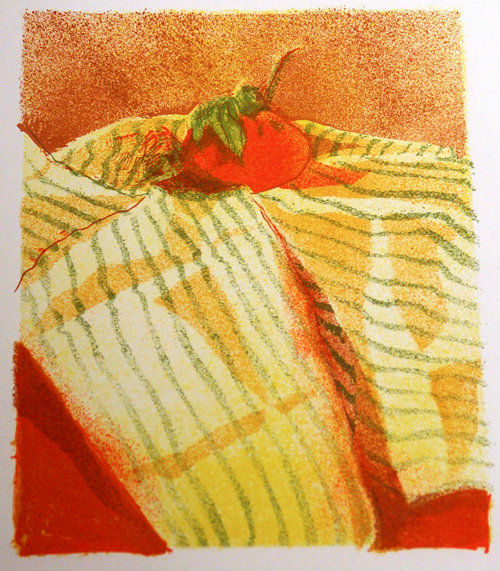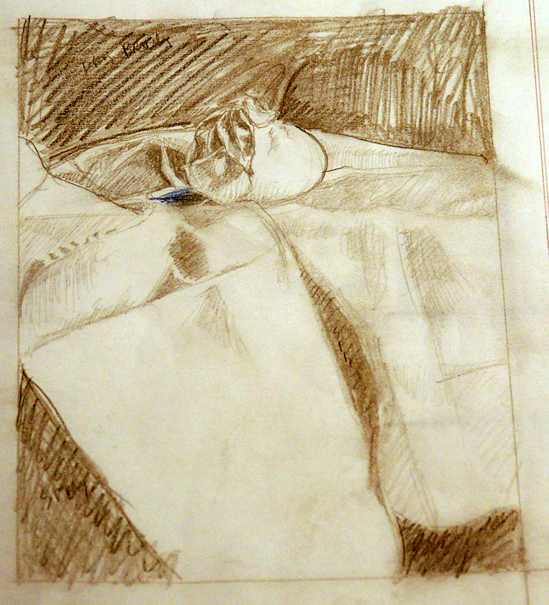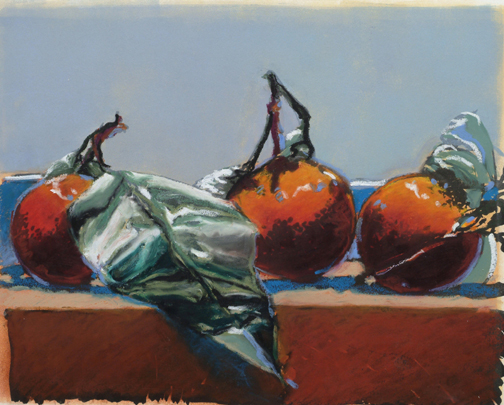This plate is primarily made using a stencil and the spray splatter technique. I really like this and can see how I can refine the idea even further in future prints, but gradually increasing or decreasing the size of the opening as I continue to add spatter . It would be a little like Stephen McClelland’s technique of doing a graduated “creeping” etch in his aquatints. Just a little.
While I like this image as it is now, I really like having the strong contrast of a black key plate. In this case, I added a small amount of purple into the black ink, to temper it a little.
I will probably add a few layers of monotype to the print (as I can rarely leave well enough alone) but I won’t do this for 4 or 5 days, as I like to give the black ink time to dry. I did add a small amount of cobalt drier so that it will not take too long. I really like Graphic Chemical’s Shop Mix Black as it is a really deep, rich black, but it does take a while to dry.
I will set these posts up as a page , so that the sequence is in order and it will stay on the site for a while. Look for it soon.








